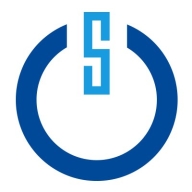

CRITICALSTART and Microsoft Sentinel are competitors in the cybersecurity sector. Microsoft Sentinel often has an advantage because of its extensive features and value derived from its integration and automation capabilities, while CRITICALSTART is competitive with its pricing and managed support.
Features:CRITICALSTART offers a highly customizable threat detection platform with proactive incident response and managed services. Its features include a Zero-Trust model for efficient alert filtering, a mobile app for on-the-go access, and an enhanced user interface. Microsoft Sentinel is known for seamless integration with Microsoft services, excellent automation using Azure Logic Apps, and advanced analytics powered by AI and machine learning. It provides comprehensive threat detection through a single pane of glass and Kusto Query Language for detailed analysis.
Room for Improvement:CRITICALSTART can improve by enhancing the speed of its new UI, addressing occasional false positives, and integrating more non-Microsoft data sources. Microsoft Sentinel could benefit from improved customer service personalization, broader data connector support to reduce false positives, and simplified integration for non-Microsoft environments.
Ease of Deployment and Customer Service:CRITICALSTART provides personalized deployment and strong customer service with quick issue resolution. Microsoft Sentinel offers a scalable, cloud-based deployment, facilitating integration within minutes while ensuring streamlined service, although it can be less personalized compared to CRITICALSTART.
Pricing and ROI:CRITICALSTART adopts a predictable cost model with notable ROI through efficient managed services, often securing over 99 percent alert filtering. Microsoft Sentinel, although varied in pricing, remains cost-effective when leveraging its full feature set, especially if using Microsoft's ecosystem, with some licensing options offering free data ingestion for Azure logs, further improving its value proposition.

The cybersecurity landscape is growing more complex by the day with the arrival of new threats and new tools supposedly designed for combating them. The problem is it’s all creating more noise and confusion for security professionals to sort through.
CRITICALSTART is the only MDR provider committed to eliminating acceptable risk and leaving nothing to chance. They believe that companies should never have to settle for “good enough.” Their award-winning portfolio includes end-to-end Professional Services and Managed Detection and Response (MDR). CRITICALSTART MDR puts a stop to alert fatigue by leveraging the Zero Trust Analytics Platform (ZTAP) plus the industry-leading Trusted Behavior Registry, which eliminates false positives at scale by resolving known-good behaviors. Driven by 24x7x365 human-led, end-to-end monitoring, investigation and remediation of alerts, their on-the-go threat detection and response capabilities are enabled via a fully interactive MOBILESOC app.
Microsoft Sentinel is a scalable, cloud-native, security information event management (SIEM) and security orchestration automated response (SOAR) solution that lets you see and stop threats before they cause harm. Microsoft Sentinel delivers intelligent security analytics and threat intelligence across the enterprise, providing a single solution for alert detection, threat visibility, proactive hunting, and threat response. Eliminate security infrastructure setup and maintenance, and elastically scale to meet your security needs—while reducing IT costs. With Microsoft Sentinel, you can:
- Collect data at cloud scale—across all users, devices, applications, and infrastructure, both on-premises and in multiple clouds
- Detect previously uncovered threats and minimize false positives using analytics and unparalleled threat intelligence from Microsoft
- Investigate threats with AI and hunt suspicious activities at scale, tapping into decades of cybersecurity work at Microsoft
- Respond to incidents rapidly with built-in orchestration and automation of common tasks
To learn more about our solution, ask questions, and share feedback, join our Microsoft Security, Compliance and Identity Community.
We monitor all Security Orchestration Automation and Response (SOAR) reviews to prevent fraudulent reviews and keep review quality high. We do not post reviews by company employees or direct competitors. We validate each review for authenticity via cross-reference with LinkedIn, and personal follow-up with the reviewer when necessary.